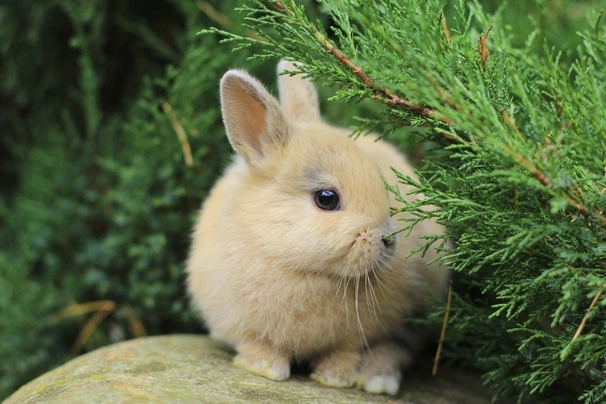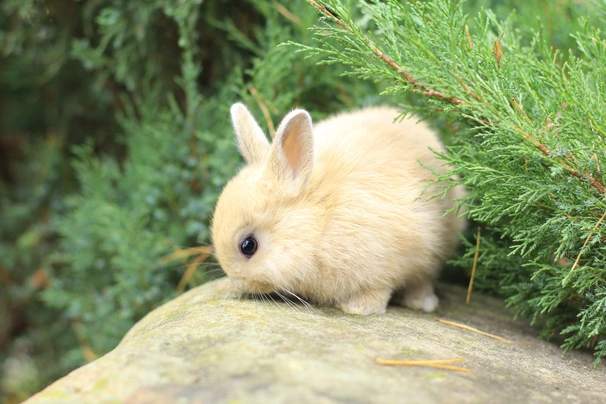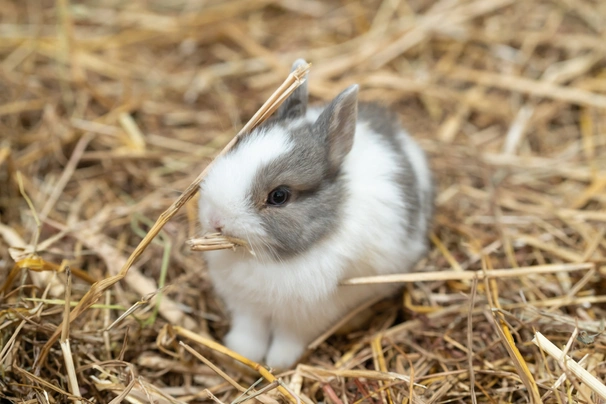Netherland Dwarf
Introduction of the Netherland Dwarf
As one of the most popular breeds of domestic rabbit, the Netherland Dwarf, as the name suggests, originated in the Netherlands and are significantly smaller than many other breeds of rabbit. Because of their small size they are usually kept as show animals or as pets and are not popular as a meat-producing breed.
Their slightly babyish appearance makes them incredibly sought after by fanciers and as pets and many of the other dwarf breeds are derived from the Netherland Dwarf.
History of the Netherland Dwarf
The Netherland Dwarf first appeared in Holland at the beginning of the 20th Century and was created by crossing Polish rabbits with smaller, wild examples. The product of these breeding efforts was a diminutive animal that came in a variety of colours with a huge array of markings.
The Netherland Dwarf first arrived on British soil in the late 1940s with the US following suit in the 1960s and 1970s. Using a slightly amended version of the British Standard, the Netherland was accepted by the American Rabbit Breeders Association in 1969.
Those early examples of the breed displayed some undesirable personality traits such as fearfulness and occasionally aggression, which experts agree was a direct consequence of introducing wild rabbits into the lines. As a result, those first dwarfs behaved more like their wild relatives and did not make good pets. Generations of selective breeding has created a gentle, affectionate animal that makes a great companion, however it is much more energetic than its larger cousins.
Appearance of the Netherland Dwarf
Average weight: 500g – 1.6kg
Somewhat unusually for a rabbit, the Netherland Dwarf’s eyes and head are large and not in proportion with the rest of its body, while its ears are very small and carried high – right on the top of its head.
The face is circular and quite short – a characteristic attributed to the animal’s inherent dwarfism and make them look like baby animals right into old age. Dwarf crosses frequently display some of these endearing characteristics (depending on what the Dwarf was bred with) however they don’t usually look quite as babyish as pedigree Netherland Dwarfs and are often a bit bigger.
Pure-bred Netherlands, as previously mentioned, come in a dazzling array of colours and patterns including chocolate, Himalayan, chestnut, black, blue, chinchilla, otter, merle, tan, steel, orange, fawn, sable, lynx, onyx, silver and sable marten and pure white (with blue or ruby eyes). Other colours do exist, but these are usually displayed by non-show quality animals and dwarf ‘mongrels’.
Temperament of the Netherland Dwarf
Netherland Dwarf rabbits display similar behavioural characteristics to dogs and cats and as such can be trained to carry out simple tasks such as using a litter tray. The success of any training however depends entirely on the dedication of the handler!
They can still occasionally display a nervous, slightly wild and sometimes disagreeable side to their personalities and this is often attributed to the wild blood that was needed to create the breed back in the early 20th Century; and although selective breeding programmes have produced an animal that is generally docile, any owner should be aware that sometimes these characteristics may rise to the surface.
Generally speaking however, the Netherland Dwarf is inquisitive and gentle and those that are handled regularly from an early age are more likely to show a calm and even temper. They may even seek out human company and display affection. A Dwarf with good breeding and that has been handled frequently makes a fantastic pet for children and adults alike. They are more robust than their size would suggest, and can withstand lots of play and handling.
Health of the Netherland Dwarf
One of the most common complaints in almost all rabbits is overgrown molars and enamel spurs. As a bunny’s teeth grow constantly they need access to foods and gnaws that will help keep their teeth down and in good condition. A diet that is high in fibre will provide the necessary roughage to wear the teeth down and keep any problems at bay.
Rabbits should be vaccinated against Myxomatosis and Viral Haemorrhagic Disease (VHD) – two conditions that can be passed from infected rabbits and can be harboured in bedding, food, water or cages and can also be caught from flies or fleas. Both conditions are usually fatal and cause pain and suffering to the infected animal.
Rabbits should be wormed twice a year and should also be treated with a flea and lice treatment designed specifically for rabbits. Neutering your pet will prevent unnecessary litters (if you are keeping more than one adult of more than one gender!), and spaying female rabbits can also prevent uterine cancer.
Fly strike is another distressing condition which can affect any rabbit that is allowed outside in warmer weather. If the animal has loose stools or becomes damp and dirty around its rear end, flies can become attracted to the area and lay their eggs in and around the anus and scent glands. A maggot infestation is very serious and can lead to infection and even death, however if it’s caught early enough it can be treated quite simply. Look out for flies around your pet in warm weather and check him for potential infestation. If he becomes listless or has seizures this could indicate a problem.
Caring for the Netherland Dwarf
Perhaps the most crucial aspect of rabbit husbandry is diet. Most domestic rabbit breeds have a delicate digestive systems and lots of green leafy vegetables such as cabbage, kale and lettuce are vital. Young rabbits should not be fed greens until about eight weeks of age as their guts have not yet had time to develop. Other great foods include greens you can pick yourself such as dandelion leaves and nettles, which will also help keep their ever-growing teeth in check.
A good-quality rabbit pellet should also be offered and manufacturer’s feeding instructions should be followed in order to prevent under or over feeding. The pellets should be no older than eight weeks and should not be contaminated in any way – pellets can begin to lose nutrients after opening which can leave your sensitive rabbit open to disease, so if the pack has been open for longer than two months it should be discarded and replaced. A pellet that is high in fibre and low in protein and fat will be best for your ND. It’s also important to remember that changes to a rabbit’s diet should be introduced gradually to avoid upsetting the delicate balance of the digestive tract.
An adult rabbit should also be given free access to plenty of good quality hay, and fresh, clean drinking water should always be available.
Before you bring your new pet home it’s important to decide whether your rabbit will live indoors or outdoors. A dwarf rabbit will live happily outdoors, but he should have a hutch that is not in a windy area or in full sun. The roof should be covered in felt and waterproofed, and the wood should be treated to prevent water getting in and to stop the wood rotting. A cover should be put over the front of the hutch in very bad weather.
The front of the hutch should be covered with fine mesh that will not allow heads or feet through and he should be provided with a run and a covered area where he can escape from harsh weather or have a snooze. The bottom of the hutch should be lined with absorbent material such as shavings and droppings and urine should be removed daily. Substrate should be removed completely and replaced once a week and his hutch should be big enough for three full hops from one end to the other and for him to stand comfortably on his hid legs. Gnaws and toys can also be provided.
If you’re rabbit is to live indoors you may choose a plastic indoor cage which resembles a large hamster cage. It would also be worth providing a litter tray and keeping anything you don’t want chewing – especially cables and wires – well out of the way.

REW Netherland Dwarf Buck
£40

READY - Fluffy white Neverland Dwarfs
£65



